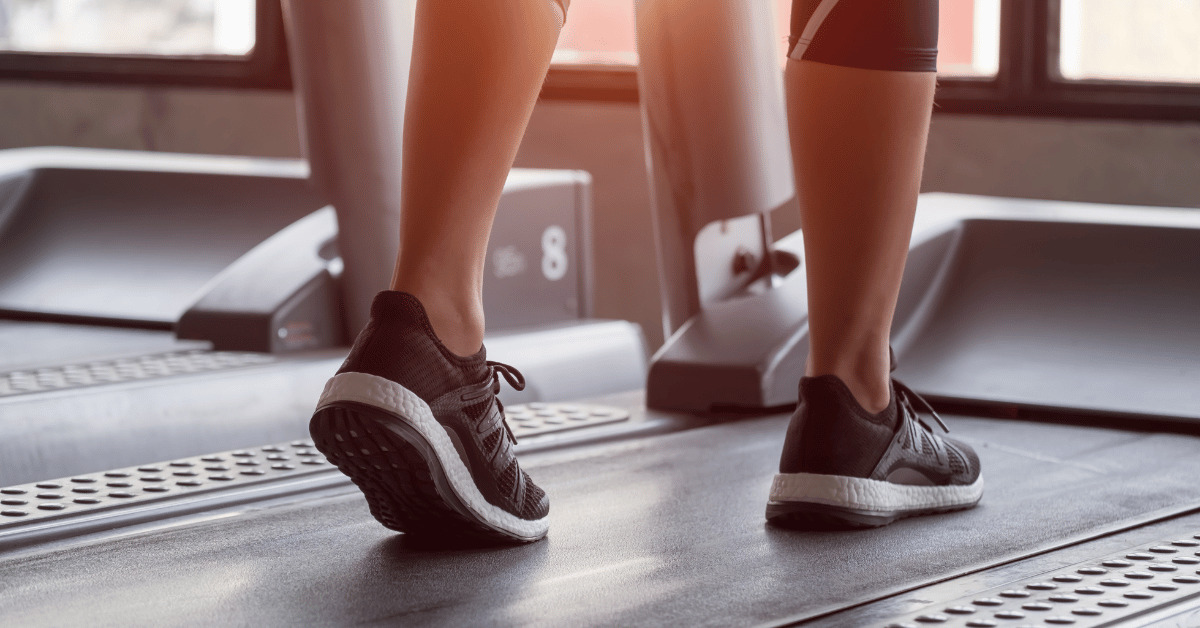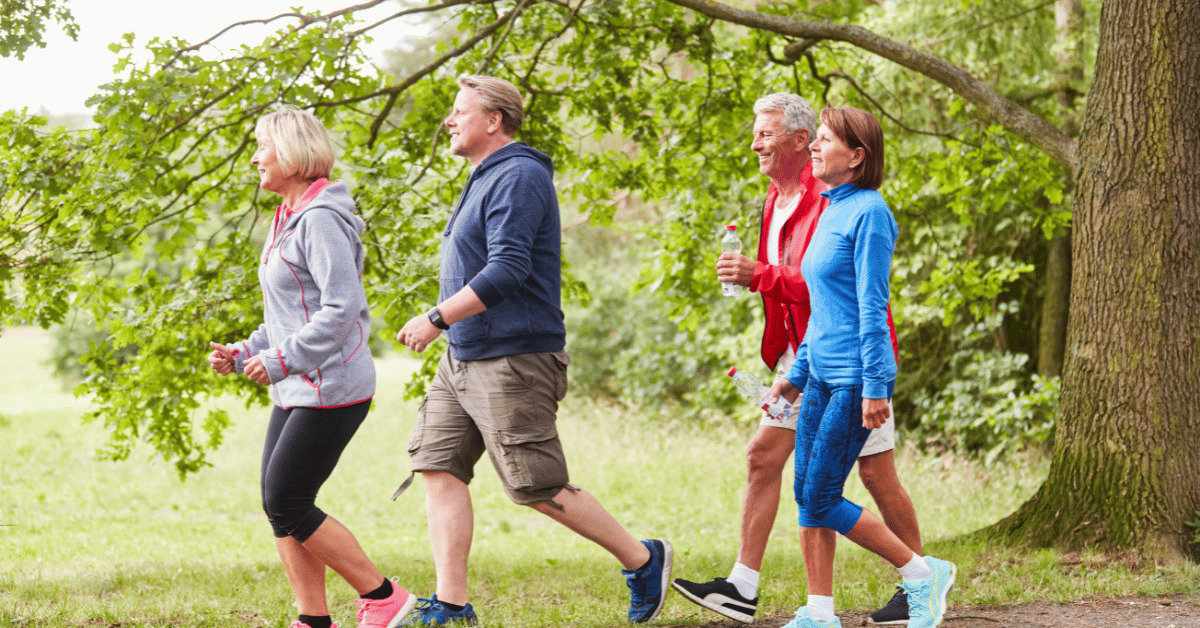
Walking is one of the easiest and most effective ways to lose weight and improve overall health. It’s a low-impact exercise that can be done by anyone, anywhere. In this blog, we will discuss all the benefits of walking for weight loss, how it compares to other exercises, and how many calories you can burn while walking. We will also cover topics such as treadmill vs. outdoor walking for weight loss, incorporating a walking app into your routine, good posture while walking for maximum impact and nutrition tips. Additionally, we’ll talk about how group walks and morning strolls can be powerful motivators in your weight loss journey. Lastly, we’ll explore the mental health benefits of walking and ways to walk for weight loss. Join us on this journey towards a healthier you!
Benefits Of Walking for Weight Loss
Walking has been scientifically proven to be effective for weight loss. A low-impact exercise, walking increases energy expenditure and enhances metabolism, leading to a reduction in body fat, particularly when coupled with a calorie-controlled diet. Furthermore, it has been shown to improve insulin sensitivity, lipid profile, and blood pressure, thereby reducing the risk of chronic metabolic diseases such as type 2 diabetes, hypertension, and cardiovascular disease. Additionally, walking has been demonstrated to positively impact mental health by reducing symptoms of depression and anxiety and enhancing overall wellbeing. An easily accessible form of physical activity, walking can be performed anywhere and at any time, promoting an active lifestyle that can lead to sustainable weight loss and better health outcomes.

Walking for Weight Loss Versus Other Exercises
When considering exercises for weight loss, walking is often overlooked in favor of higher intensity forms of exercise such as running or weightlifting. However, research has shown that walking can be just as effective for weight loss as other forms of exercise, particularly when performed consistently over time. In fact, studies have found that brisk walking can burn as many calories as running, with less impact on the joints and a lower risk of injury. Walking also has the added benefit of being a sustainable form of physical activity that can be performed by individuals of all fitness levels and ages, making it a highly accessible way to promote weight loss and improve overall health. Furthermore, walking has been demonstrated to have similar effects on reducing the risk of chronic diseases such as diabetes and cardiovascular disease when compared to more vigorous forms of exercise. Therefore, walking should be considered as a viable and effective option for individuals who are looking to lose weight and improve their health and wellbeing.
How Many Calories Does Walking Burn?
The number of calories burned during a walking workout depends on a variety of factors including weight, fitness level, and speed. However, on average, a person weighing around 150 pounds can expect to burn approximately 100 calories per mile walked at a moderate pace. This means that a one-hour walking workout can burn around 300-400 calories, depending on factors such as pace and incline. Although this may seem like a relatively small amount compared to high-intensity exercises, the benefits of a walking workout extend beyond just calorie burn. It also helps increase muscle mass, improve bone density, and reduce stress levels, making it an ideal form of exercise for overall health and wellbeing. Therefore, incorporating regular walks into your daily routine can help you achieve your weight loss goals while improving your overall health and fitness.

Treadmill Versus Outdoor Walking
When it comes to walking for weight loss, there is a debate about whether walking on a treadmill or outdoors is more effective. Scientific studies have shown that the calories burned during walking depend on the speed at which one walks and the incline of the terrain. Walking outdoors on a flat surface can burn slightly more calories than a treadmill at the same speed, due to the wind resistance and uneven terrain. However, if the treadmill is set to a 1% incline, it can simulate the energy expenditure of walking outdoors. Furthermore, using a treadmill allows for greater control over pace and incline, thereby enabling targeted calorie burn. For example, walking at a speed of 3-4 mph on a 1% incline can burn up to 300-400 calories per hour. Ultimately, choosing between walking on a treadmill or outdoors depends on individual preference, weather, and availability. Regardless of the choice, walking remains an effective and accessible form of exercise for weight loss and overall health.
Using Incline for Weight Loss
Incorporating walking on an incline or hiking into your exercise routine is a highly effective way to target different muscle groups and increase calorie burn. Walking on an incline engages the glutes, hamstrings, and calves, allowing for greater muscle activation and energy expenditure compared to walking on a flat surface. Additionally, incline walking can help improve overall cardiovascular health by increasing heart rate and promoting blood flow to the lower extremities. It’s important to note that while incorporating incline walking or hiking into your exercise routine is highly effective, you don’t want to get out of breath. In order to burn fat, you need oxygen. Monitor your speed so you are walking at a pace that allows you to hold a conversation without getting out of breath is the key to maximizing fat burn during your workout. This is especially important when walking on an incline or hiking, as this activity level can significantly increase heart rate. By maintaining a steady pace and breathing properly, you can ensure that your body is efficiently using oxygen to burn fat and improve overall cardiovascular health. Ultimately, incorporating walking on an incline or hiking into your exercise routine can provide a range of benefits, from increased muscle activation and calorie burn to improved cardiovascular health and overall fitness.

Incorporating a Walking App for Weight Loss
If you’re looking for an effective way to track your progress, set goals, and boost your metabolic rate while walking for weight loss, consider using the Practice Better App. Dr. Ryan, a Functional Medicine Practitioner, has designed a Free 21-day walking challenge that has everything you need to get started. By joining this challenge through the Practice Better App, you get access to daily videos, a workbook, and a calendar to track your progress. Don’t miss out on this opportunity to optimize your walking routine- join the Free 21-day walking challenge today through the Practice Better App and start tracking your progress! Click here to register.
Walking with Good Posture
Walking with good posture is essential for maximizing the benefits of your workout and avoiding injury. Proper posture aligns the spine, engages the core, and promotes efficient breathing, allowing you to walk further and burn more calories. To achieve good posture while walking, stand up straight with your shoulders back and down, keeping your chin parallel to the ground. Engage your core muscles by pulling your belly button in towards your spine, and maintain a slight bend in your knees to absorb impact and prevent strain on your joints. Additionally, swing your arms naturally at your sides, keeping them relaxed and loose. By walking with good posture, you can improve balance, stability, and overall body mechanics, while minimizing the risk of injuries such as lower back pain, knee pain, or plantar fasciitis. Incorporating walking with good posture into your exercise routine can help you burn more calories and get the most out of your workout.

Nutrition Tips
To effectively lose weight, it’s important to focus not only on exercise but also on proper nutrition. Americans tend to consume more calories than they need, which can lead to weight gain and obesity. One important nutrition tip for weight loss is to reduce calorie intake by consuming fewer calories than your body uses each day. This can be achieved by choosing whole foods such as fruits, vegetables, lean protein, and healthy fats, and avoiding processed foods with added sugars and excess calories. Additionally, monitoring portion sizes and using measuring cups or a food scale to ensure that you’re eating the right amount of food can help limit calorie intake. Studies have shown that reducing calorie intake by 500-750 calories per day can result in a weight loss of 1-2 pounds per week, depending on factors such as age, sex, and activity level. By following these nutrition tips and reducing calorie intake, you can achieve a sustainable amount of weight loss and improve overall health and wellness.
The Importance of Hydration
Hydration is an essential component of good health and weight-loss, especially when incorporating walking into your fitness routine. The human body is made up of about 60% water, and every system in our body relies on it to function correctly. When we don’t drink enough water, we become dehydrated, which can lead to fatigue, headaches, and poor concentration. Dehydration can also slow down metabolism, making it harder to lose weight while walking. Additionally, drinking water instead of sugary beverages like soda and juice can help reduce overall calorie consumption. Drinking enough water throughout the day can improve digestion, boost energy levels, and keep our skin looking healthy. So what’s the ideal amount of water you should drink daily? While the answer varies by individual, a good rule of thumb is to aim for eight glasses (or 64 ounces) of water each day to support your weight loss goals while walking.

How Often to Walk for Weight Loss
The frequency of walking for weight loss depends on various factors such as age, body weight, and fitness level. According to scientific studies, walking for at least 30 minutes per day, or a total of 150 minutes per week, can result in weight loss and improved overall health. However, to achieve significant weight loss, walking for longer periods and more frequently may be necessary. Studies have shown that increasing the duration to 45-60 minutes per day, or a total of 300 minutes per week, can lead to greater reductions in body weight and waist circumference. Additionally, incorporating higher intensity sessions, such as incline walking or interval training, can increase calorie burn and further boost weight loss results. It’s essential to note that the frequency and intensity of walking for weight loss should be tailored to individual needs and goals. Consulting with a healthcare professional or certified personal trainer can help establish an appropriate walking routine to achieve optimal weight loss and overall health.
Creative Ways to Incorporate Walking into Daily Routines
Looking for easy ways to incorporate walking into your daily routine? Consider making the most of your lunch break. Taking a quick walk around the block or heading to a nearby park for a stroll can provide both exercise and a mental break from work. Walking with a colleague or friend can also promote social connection and provide additional accountability. Using a fitness tracker to monitor your steps and set daily goals can help increase your activity levels, motivating you to find ways to walk more throughout the day, such as taking the stairs instead of the elevator or parking further away from your destination. With these simple strategies, you can make walking a regular part of your routine and enjoy the many health benefits that come with it.

Go for a Morning Stroll
Walking in the morning is an excellent way to start your day and reap the many benefits that come with it. Whether you prefer to walk solo, with a friend, or with your dog, a morning stroll is an effective and enjoyable aerobic exercise that aids in weight loss and improves your overall health. It is a low-impact workout that can be done every day without putting too much stress on your joints, unlike other high-impact exercises. Start with a short walk every day and gradually increase the duration and intensity as you build up your endurance. With consistency and patience, you’ll soon see the benefits of this simple yet powerful exercise in your weight loss journey.
Walking For Sustainable Weight Management
If you’re looking for a simple and effective way to manage your weight, walking might be the best way to go. Research has shown that walking at a brisk pace can help increase energy expenditure and improve cardiovascular fitness, leading to successful weight loss and improved weight management over time. To get the most out of walking for weight management, it’s recommended that you aim for at least 150 minutes of moderate-intensity walking per week, preferably in bouts of at least 10 minutes at a time. Integrating it into your daily routine by taking short walking breaks during the day, using stairs instead of elevators or walking to work can make it easier to achieve this goal. Combining a healthy diet with walking can optimize weight loss outcomes and improve overall health. Ultimately, incorporating the right amount of time spent walking into your weekly routine can be an effective way to achieve sustainable weight management.
Can you Lose Belly Fat with Walking?
Yes, walking can be an effective way to help you lose belly fat. Consistent walking can help burn calories, which can lead to a reduction in body fat, including belly fat. However, it’s important to pair walking with a healthy diet and other forms of exercise for optimal results.

Walking for Weight Loss with a Partner or Pet
Walking can be more than just a solo activity. In fact, walkers who exercise with a partner or a pet can experience even more benefits. A study by the University of Missouri found that dog-walking groups were more likely to stick to their exercise routines and achieve their weight loss goals compared to those who walked alone. Similarly, walking with a partner not only provides accountability but also makes the experience more enjoyable and social for walkers. Walking with a pet or a friend not only improves your physical health but also your mental well-being. By sharing the experience with another person or a furry companion, walkers can find walking to be a fun and rewarding activity that can help them stay on track with their weight loss journey. Additionally, walkers can experiment with different routes, terrains and speeds to keep things interesting. So next time you lace up your shoes for a walk, consider bringing along a partner or a pet to make the experience even more enjoyable and rewarding.
The Mental Health Benefits of Walking for Weight Loss
Walking is not only great for physical health, but it is also beneficial for mental health. Going for a walk can help reduce stress, anxiety, and depression, making it an effective tool for improving mental wellbeing. Outdoor walking is especially useful as it allows individuals to connect with nature and get some fresh air and sunlight. It releases endorphins, which are the body’s natural feel-good chemicals, providing a sense of happiness and positivity. Additionally, walking can provide a sense of accomplishment and boost self-esteem, especially when setting and achieving personal fitness goals. Finally, it provides an opportunity to clear your mind, reflect on the day, and reduce mental clutter. Overall, incorporating walking into your daily routine can help improve your physical fitness while providing numerous mental health benefits.

The Role of Patience and Consistency
Patience and consistency are essential in achieving any goal, especially when it comes to improving one’s health and fitness. It is important to understand that success is not achieved overnight. To see results, it requires patience, consistent effort, and motivation. Set realistic goals and create an action plan that aligns with those goals. Celebrate small victories along the way and use them as fuel to keep going. Consistency is also critical. Establishing a routine and sticking to it can help build the mental and physical endurance needed to make lasting changes to your health and fitness. A gradual increase in the intensity of your walk with incline or strength training can help you burn more calories and build lean muscle. Maintaining good posture and stride while walking is crucial to prevent injury and improve overall health. Walking is a great way to incorporate regular physical activity into your daily routine and achieve a calorie deficit that can aid in weight loss. In addition to its numerous benefits for cardiovascular health and blood sugar control, brisk walking can also lower blood pressure.
Step In to a Healthier You
Walking is one of the simplest and most effective ways to achieve weight loss and improve overall health. It is low-impact, adaptable, and can be done alone or with others. Walking regularly not only helps burn calories but also improves cardiovascular health, strengthens muscles, and boosts mental well-being. It can be done indoors or outdoors, using a treadmill or a walking app. However, walking for weight loss requires patience and consistency, and it’s best to seek guidance from a Functional Medicine professional. Joining group walks or taking your pet along can add to the motivation and enjoyment of this simple yet powerful exercise. So put on your walking shoes, set achievable goals, walk with good posture and come back home feeling great!
Join the 21 Day Walking Challenge
If you’re looking for a fun and exciting way to improve your health and wellbeing, why not join Dr. Ryan in the 21-day Walking Challenge? By registering for the challenge, you’ll be taking a step towards improving your physical fitness and overall health. You’ll also have the opportunity to connect with others who share your commitment to health and wellness, and you’ll receive regular encouragement and support from Dr. Ryan himself! Plus, by completing the challenge, you’ll establish healthy habits that can have lasting benefits on your life. So don’t wait any longer—register today and start walking towards a healthier, happier you!
References
Walking Pace Is Associated with Lower Risk of All-Cause and Cause-Specific Mortality https://pubmed.ncbi.nlm.nih.gov/30303933/
Effect of walking exercise on abdominal fat, insulin resistance and serum cytokines in obese women https://www.ncbi.nlm.nih.gov/pmc/articles/PMC4241903/
Quantifying the dose-response of walking in reducing coronary heart disease risk: meta-analysis https://pubmed.ncbi.nlm.nih.gov/19306107/
Walking as an Opportunity for Cardiovascular Disease Prevention https://www.cdc.gov/pcd/issues/2019/18_0690.htm
Walking 200 min per day keeps the bariatric surgeon away https://www.sciencedirect.com/science/article/pii/S2405844023037635
Effects of Walking Speed on Total and Regional Body Fat in Healthy Postmenopausal Women https://www.ncbi.nlm.nih.gov/pmc/articles/PMC8840715/








